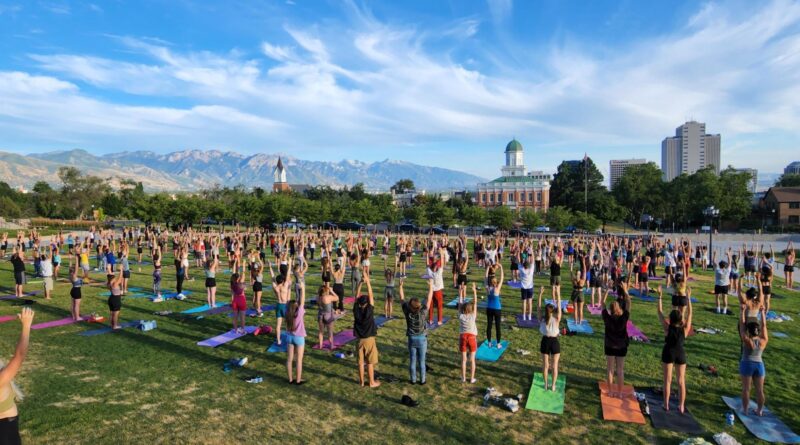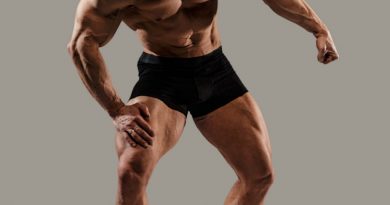Powering Through Your Yoga Practice: All About Power Yoga
Yoga is an ancient practice that has been around for centuries, and its popularity continues to grow. Power Yoga is a modernized form of traditional yoga, combining strength training with yoga poses and sequences to create a challenging and energizing workout. In this blog post, we will be exploring the world of Power Yoga, from the poses and workouts to the incredible benefits it offers. So, let’s get started and power through your yoga practice!
What is Power Yoga?
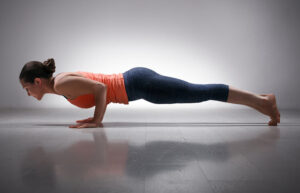 Power Yoga is a dynamic and energetic style of yoga that was developed in the 1990s. It combines traditional yoga postures with flowing movements and intense, challenging sequences that aim to improve strength, flexibility, balance, and endurance. Unlike traditional yoga, Power Yoga emphasizes physical fitness and aims to create a cardiovascular workout that can burn calories, build muscles, and increase stamina.
Power Yoga is a dynamic and energetic style of yoga that was developed in the 1990s. It combines traditional yoga postures with flowing movements and intense, challenging sequences that aim to improve strength, flexibility, balance, and endurance. Unlike traditional yoga, Power Yoga emphasizes physical fitness and aims to create a cardiovascular workout that can burn calories, build muscles, and increase stamina.
This form of yoga draws inspiration from various yoga styles such as Ashtanga, Vinyasa, and Iyengar yoga, as well as modern fitness practices such as calisthenics, plyometrics, and weightlifting. Power Yoga sequences usually include a series of fast-paced, dynamic movements that are synchronized with the breath, which helps to focus the mind and deepen the connection between the body and breath.
Power Yoga is a challenging practice that requires concentration, determination, and effort. It is not suitable for beginners or people with physical limitations, as it can put a lot of stress on the joints, muscles, and cardiovascular system. However, with consistent practice and proper guidance, anyone can learn to practice Power Yoga safely and effectively.
In summary, Power Yoga is a modern yoga style that emphasizes physical fitness, strength, and endurance. It combines traditional yoga postures with dynamic movements and intense sequences to provide a full-body workout that can improve overall health and wellness.
History and Evolution of Power Yoga
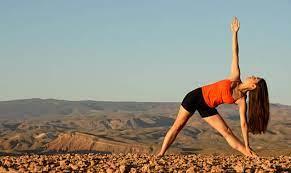 Power yoga, also known as vinyasa yoga, is a modern yoga style that was created in the late 1980s. The practice was developed as a way to combine traditional yoga postures with cardiovascular exercise. This innovative style of yoga was popularized by two American yoga teachers, Beryl Bender Birch and Bryan Kest.
Power yoga, also known as vinyasa yoga, is a modern yoga style that was created in the late 1980s. The practice was developed as a way to combine traditional yoga postures with cardiovascular exercise. This innovative style of yoga was popularized by two American yoga teachers, Beryl Bender Birch and Bryan Kest.
Beryl Bender Birch was the first to use the term “power yoga” to describe a vigorous form of yoga practice. She was influenced by the teachings of Sri K. Pattabhi Jois, the founder of Ashtanga yoga, and introduced elements of his style into her own practice. Her 1995 book, Power Yoga: The Total Strength and Flexibility Workout, was the first to introduce the style to a wider audience.
Around the same time, Bryan Kest was also developing a style of yoga that emphasized strength, flexibility, and balance. His approach was less focused on alignment and more on cultivating a meditative mindset while moving through challenging postures. Kest’s classes became popular in Los Angeles, where he founded the Power Yoga studio in Santa Monica.
Over the years, power yoga has continued to evolve and expand. Today, there are countless variations of the practice, each with its own unique focus and style. Some teachers emphasize the physical benefits of the practice, while others emphasize the mental and spiritual benefits.
Despite its relatively short history, power yoga has become one of the most popular styles of yoga in the world. Its focus on strength, flexibility, and balance appeals to many practitioners, and its dynamic nature makes it a challenging and rewarding practice for all levels of experience.
Benefits of Power Yoga
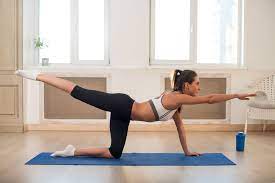
Power Yoga has gained popularity among fitness enthusiasts for a reason. This dynamic form of yoga offers numerous benefits for both the mind and the body. Here are some of the advantages of Power Yoga:
1. Increased Strength: Power Yoga poses require you to engage and use different muscle groups, leading to a gradual increase in your strength and stamina.
2. Improved Flexibility: Regular Power Yoga practice can help you become more flexible, enabling you to move through poses with ease.
3. Better Balance: Power Yoga poses are often performed with one leg or arm raised, which can improve your balance and stability.
4. Reduced Stress: Power Yoga focuses on breathing and mindfulness, helping you to stay present and calm during your practice. This can reduce stress levels and promote relaxation.
5. Weight Loss: Power Yoga is a great workout for burning calories and shedding unwanted weight.
6. Increased Energy: Power Yoga sequences involve continuous movement, which can help to boost your energy levels and improve circulation.
7. Better Focus and Concentration: The mindful nature of Power Yoga helps to improve focus and concentration, which can carry over to other aspects of your life.
8. Enhanced Self-Awareness: As you become more familiar with your body through Power Yoga practice, you may develop a greater sense of self-awareness and body confidence.
Overall, Power Yoga can be a highly rewarding practice that benefits your physical and mental health. Whether you’re a beginner or an experienced yogi, this dynamic style of yoga offers a challenging yet invigorating workout that can transform your body and mind.
Top Power Yoga Poses for a Complete Workout
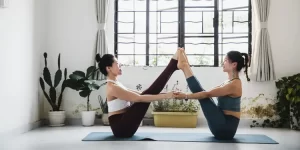 If you’re looking for a challenging and energizing yoga practice, Power Yoga might just be what you need. Power Yoga is a dynamic and athletic style of yoga that focuses on strength, flexibility, and breath control. It involves moving quickly through a series of poses, or asanas, to build heat and stamina, while also improving balance and mental focus.
If you’re looking for a challenging and energizing yoga practice, Power Yoga might just be what you need. Power Yoga is a dynamic and athletic style of yoga that focuses on strength, flexibility, and breath control. It involves moving quickly through a series of poses, or asanas, to build heat and stamina, while also improving balance and mental focus.
Here are some of the top Power Yoga poses that you can incorporate into your practice for a complete workout:
1. Downward Facing Dog (Adho Mukha Svanasana)
This classic yoga pose helps stretch the entire body, including the shoulders, hamstrings, calves, and arches of the feet. It also improves circulation, relieves stress, and calms the mind.
2. Warrior II (Virabhadrasana II)
This pose strengthens the legs, hips, and core, while also opening the chest and shoulders. It improves balance, endurance, and mental focus, making it a great pose for building confidence and inner strength.
3. Chair Pose (Utkatasana)
This challenging pose strengthens the quadriceps, glutes, and core, while also stretching the shoulders and chest. It helps improve posture, balance, and endurance, and can also stimulate the digestive and lymphatic systems.
4. Plank Pose (Phalakasana)
This pose strengthens the entire body, including the arms, shoulders, core, and legs. It helps improve posture, balance, and stability, while also reducing the risk of injury in other poses.
5. Cobra Pose (Bhujangasana)
This backbend pose strengthens the back, shoulders, and arms, while also stretching the chest and abdominals. It helps improve posture, flexibility, and mental focus, and can also stimulate the digestive and reproductive systems.
These are just a few of the many Power Yoga poses that you can practice for a complete workout. Remember to focus on your breath, stay present in the moment, and listen to your body to avoid injury and get the most out of your practice.
How to Get Started with Power Yoga
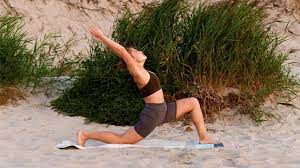 Power yoga can seem intimidating for beginners, but it is actually a great way to get in shape and improve flexibility. If you’re new to this form of yoga, here are some tips to help you get started:
Power yoga can seem intimidating for beginners, but it is actually a great way to get in shape and improve flexibility. If you’re new to this form of yoga, here are some tips to help you get started:
1. Find a qualified teacher: Look for a certified power yoga instructor who can guide you through the practice safely. You can search online for classes in your area or check out online classes.
2. Start slow: Don’t jump into a power yoga class right away. Begin with gentle yoga poses and gradually build up to more challenging ones.
3. Warm up: It is important to warm up before you start your power yoga practice. You can do some light stretches or take a few minutes to walk around.
4. Wear comfortable clothes: Wear loose-fitting clothing that allows you to move freely. You may also want to bring a towel and water bottle.
5. Use props: Blocks, straps, and blankets can help you modify the poses and make them more accessible.
6. Stay focused on your breath: Power yoga is a dynamic practice that can be physically demanding. Remember to focus on your breath and listen to your body’s signals.
7. Take breaks when needed: If you need to take a break or modify a pose, that’s perfectly fine. Power yoga is about building strength and flexibility at your own pace.
Remember, practice makes perfect. As you continue to practice power yoga, you will gradually build up your strength and stamina. Keep pushing yourself to try new poses and challenge your body, but always listen to your body and be gentle with yourself. With time and dedication, you will see great results and reap the many benefits of power yoga.
Tips for an Effective Power Yoga Practice
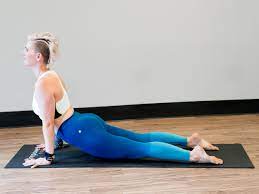 If you’re interested in getting the most out of your Power Yoga practice, there are a few tips to keep in mind. These tips will help you maximize your workout, improve your flexibility and strength, and prevent injury.
If you’re interested in getting the most out of your Power Yoga practice, there are a few tips to keep in mind. These tips will help you maximize your workout, improve your flexibility and strength, and prevent injury.
1. Focus on your breath: Breathing is an essential component of yoga practice, and Power Yoga is no exception. Inhale deeply and exhale slowly as you move through each pose, keeping your breath smooth and even.
2. Use proper alignment: Alignment is critical in Power Yoga, as it helps you maintain proper form and avoid injury. Listen carefully to your teacher’s instructions and pay attention to how your body feels in each pose. Use props like blocks and straps to support your body if necessary.
3. Start slow: Power Yoga is a vigorous form of yoga, so it’s essential to start slow and gradually build up your practice. If you’re new to yoga or have any physical limitations, start with a beginner’s class and work your way up from there.
4. Stay hydrated: Power Yoga can be a sweaty workout, so it’s crucial to stay hydrated throughout your practice. Drink plenty of water before, during, and after class to replenish your fluids and prevent dehydration.
5. Don’t push too hard: While Power Yoga is a challenging form of yoga, it’s essential to listen to your body and not push yourself too hard. If you feel pain or discomfort, back off the pose and modify it as needed. Remember, it’s better to do less with proper form than to do more with incorrect form.
By following these tips, you’ll be able to enjoy a safe and effective Power Yoga practice that leaves you feeling energized, focused, and strong. With time and practice, you’ll be able to push yourself further and experience the full benefits of this dynamic form of yoga.
Common Misconceptions about Power Yoga
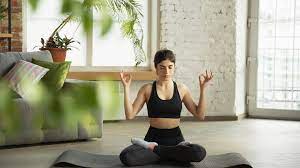
There are a few misconceptions surrounding Power Yoga that are worth addressing. The first one is that Power Yoga is all about strength training and flexibility. While Power Yoga does require strength and flexibility, it is also about calming the mind and connecting with your breath.
Another common misconception is that Power Yoga is only for athletes or those with a high level of fitness. This is simply not true. Anyone can practice Power Yoga, regardless of their fitness level or background.
A third misconception is that Power Yoga is too intense or fast-paced. While some Power Yoga classes may be more intense or fast-paced than others, there are also slower, more gentle classes available. It’s important to find a class and pace that works for you.
Finally, some people believe that Power Yoga is a “westernized” or “watered-down” version of traditional yoga. While Power Yoga does draw inspiration from traditional yoga, it has evolved into its own unique practice with a focus on strength, endurance, and mindfulness.
By understanding these misconceptions, you can better approach and appreciate the benefits of Power Yoga in your own practice.
Power Yoga vs. Other Types of Yoga
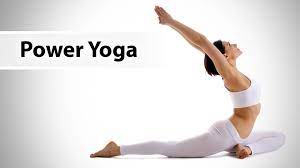
Yoga has become a popular form of exercise in recent years, with many different types of yoga styles available. While they all share the common goal of improving strength, flexibility, and overall health, each style has its own unique characteristics and benefits. Power yoga, in particular, has gained a reputation as one of the most intense and challenging forms of yoga. Let’s compare power yoga to some of the other popular styles of yoga:
Hatha yoga is a gentle and traditional form of yoga that focuses on the alignment of poses and breath control. It is great for beginners or those looking for a more relaxing yoga experience. Hatha yoga often incorporates meditation and pranayama (breathing techniques) and is great for reducing stress and promoting relaxation.
Vinyasa yoga is a faster-paced form of yoga that focuses on flowing through sequences of poses in coordination with breath. It is often described as “moving meditation” and can be a great way to get your heart rate up while still focusing on alignment and breath control. Vinyasa yoga is great for improving cardio endurance, strength, and flexibility.
Bikram yoga, also known as hot yoga, is practiced in a heated room with temperatures around 105°F. The sequence of 26 poses is designed to work every muscle, tendon, ligament, and organ in the body, while also promoting detoxification. Bikram yoga is great for those looking to improve their overall physical health, as well as those looking for a challenge.
Ashtanga yoga is a physically demanding practice that focuses on a set sequence of poses that are practiced in a specific order. Each pose is held for a specific amount of time and is connected to breath in a continuous flow. Ashtanga yoga is great for building strength, endurance, and flexibility.
Power yoga is a fast-paced, challenging form of yoga that focuses on building strength and endurance. It is often described as a “gym-like” experience with more of a focus on physical fitness than spiritual growth. Power yoga incorporates traditional yoga poses, as well as more intense variations and sequences. Power yoga is great for improving overall physical fitness, building muscle tone, and reducing stress.

